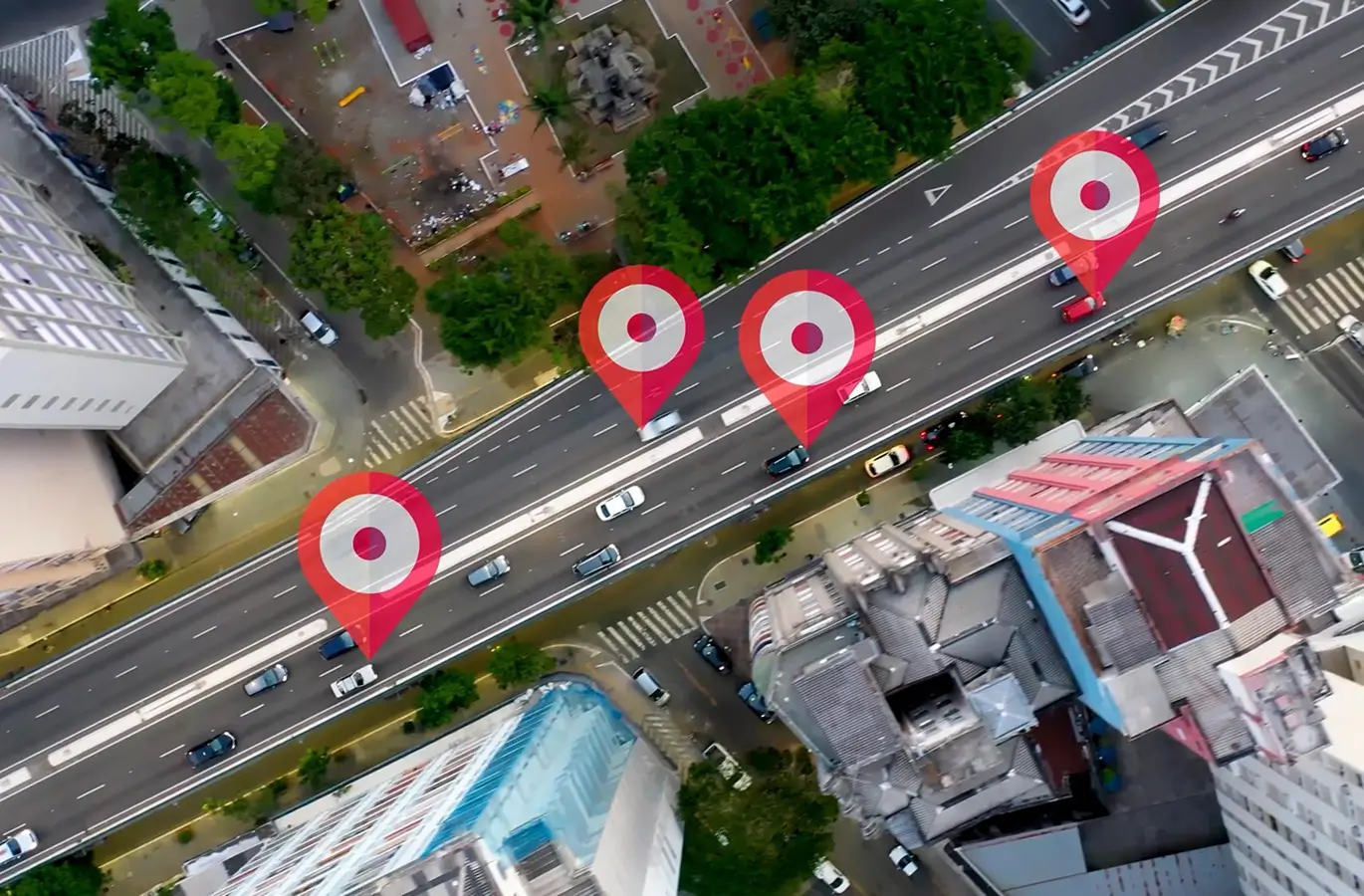REACH offers smart fleet management services to drastically cut costs and boost vehicle uptime by transforming reactive maintenance into a proactive, coordinated strategy. The platform provides 24/7 access to a verified vendor network, end-to-end repair visibility, automated workflows, and performance scoring for vendors, leading to reported reductions of up to 35% in unplanned downtime and a 22% drop in maintenance expenses. It functions as a unified command center, integrating all service, repair, and communication activities.
What if one breakdown could derail your entire operation? Picture this: It’s 3:42 AM, and a delivery truck breaks down enroute to a critical client location. The driver is stranded, dispatch is asleep, and the maintenance team is scrambling to find an available vendor. Every minute lost is revenue slipping away, customers losing patience, and operations falling behind. Now multiply that by a fleet of 50 or 500.
Considering the current logistics landscape, fleet downtime isn’t a hiccup—it’s a crisis. Every hour of delay increases operational costs, strains human resources, and puts customer relationships at risk.
Businesses need more than just GPS tracking or maintenance reminders. They need intelligent fleet management solutions that coordinate service, track repair progress, and eliminate bottlenecks before they become losses.
That’s where REACH steps in—not as another software but as a partner built for uptime optimization. REACH doesn’t just help you keep track of your fleet—it ensures your entire service process runs smarter, faster, and smoother.
Fleet Management Services: More Than Maintenance
Fleet management services have evolved to become the operational backbone of modern logistics and field service companies. Where once they were limited to paper logs, call-based vendor coordination, and vehicle records stored in spreadsheets, they now form a digital control center that manages end-to-end service lifecycles.
Today’s fleet management services enable companies to:
- Centralize service coordination: Every job request, from a flat tire to a scheduled oil change, is tracked and managed through one platform, reducing missed handoffs and duplicated efforts.
- Provide real-time visibility: Know where your vehicles are, what service they’re undergoing, who is handling it, and when they’ll be back on the road.
- Optimize preventive maintenance by Using usage data and performance history to analyse when a vehicle needs attention, thereby avoiding breakdowns and maximizing asset lifespan.
- Track performance metrics: Build a data-driven fleet strategy based on real KPIs like response times, cost per repair, vendor efficiency, and vehicle uptime.
- Enable real-time vendor dispatch: Automate vendor selection and job assignment, reducing lag and improving time-to-repair.
With all of these capabilities consolidated in REACH, fleet managers gain the visibility and control they need to operate at a higher level of efficiency and reliability.
The Domino Effect of Downtime
When a single vehicle goes down, the consequences are immediate and multifaceted. It’s not just a missed delivery or delayed pickup—it’s an entire workflow thrown off balance. That vehicle might have had a series of jobs lined up, a critical time-sensitive cargo, or served as the linchpin for a coordinated dispatch route.
Let’s consider the cascading costs:
- You pay drivers overtime for waiting during repairs.
- Other vehicles may need to be rerouted, resulting in increased fuel usage and longer road times.
- Customers often receive late deliveries, which can impact trust and lead to lost repeat business.
- Your service or logistics team spends hours manually coordinating resolutions.
Industry data confirms this reality:
- Vehicle downtime can cost anywhere from $488 to $760 per day per unit.
- Poor vendor communication causes nearly a quarter of all delays.
- Companies relying on disconnected systems experience up to 30% longer repair cycles.
Downtime is never just a mechanical problem. It’s a business problem.
Where REACH Excels: Real-Time Service Coordination at Scale
REACH is built to meet these exact challenges. It brings together automation, vendor intelligence, field visibility, and preventative service management into a single, high-performing platform. Let’s explore its five powerful capabilities in detail:
1. 24×7 Access to Service Vendors
Whether your vehicle breaks down in a busy metro or a rural route, REACH instantly connects you to a vetted, verified vendor network. This means no more panicked calls, no more waiting for business hours, and no more scrambling to find support in unfamiliar regions. The platform ensures that help is always on standby.
2. End-to-End Repair Visibility
From the moment a service request is initiated, you can track every step—technician dispatch, estimated arrival time, job progress, repair status, and final resolution. Fleet managers get full situational awareness without having to chase updates. Records are archived automatically, enabling service history analysis and compliance reporting.
3. Automated Workflows with Human Control
REACH intelligently automates recurring tasks, such as maintenance alerts and vendor dispatch, saving time and reducing human error. But it doesn’t remove the decision-making power of fleet managers. You still control priorities, approvals, and escalations, supported by smart alerts and status updates.
4. Built-in Vendor Performance Scoring
The platform scores every service vendor based on real-time KPIs—arrival punctuality, repair success rates, time to resolution, customer feedback, and more. This enables fleet managers to refine their vendor partnerships and reward consistent performance with additional jobs.
5. Field-to-Desk Communication Loop
Drivers on the road can use their mobile devices to raise requests, upload images of the issue, receive updates, and confirm job completion. Meanwhile, operations teams back at HQ stay fully informed. The entire service cycle becomes transparent, documented, and auditable.
Uptime Advantage: How REACH Turns Minutes Into Savings
Uptime isn’t just a metric—it’s a competitive advantage. Every minute saved on repairs, coordination, and recovery is a minute gained in productivity, customer service, and profit. REACH is built around this philosophy, transforming traditional reactive maintenance into a proactive, insight-driven strategy.
Here’s how businesses benefit:
- A faster response translates to a quicker turnaround, allowing vehicles to return to business without unnecessary delay.
- Vendor analytics help identify and eliminate underperformers, reducing the frequency of repeated service failures.
- Reporting dashboards provide clarity on spend, service types, and vehicle performance, enabling effective cost control.
- Drivers become active participants in fleet health, improving data capture and reducing avoidable downtime.
These benefits are not just anecdotal. Fleets using REACH report:
- 35% reduction in unplanned vehicle downtime.
- 22% drop in annual maintenance expenses.
- 40% improvement in response time from issue detection to resolution.
The ROI isn’t hidden. It’s measurable, trackable, and felt across every level of the operation.
One Platform. One Ecosystem. One Command Center.
A common problem in fleet management is fragmentation. One tool handles GPS tracking, another manages service tickets and yet another logs vendor invoices. The result? Inefficiency, miscommunication, and gaps in critical data.
REACH solves this with a fully integrated platform. All functions—from routine inspections and vendor dispatch to emergency repair coordination—operate under one unified system. Dispatchers, fleet heads, drivers, vendors, and finance teams all engage with the same real-time source of truth.
Additionally, REACH’s open integration capabilities enable it to seamlessly integrate with existing tools, including dispatching systems, ERP suites, telematics platforms, and fuel optimization software. You don’t have to overhaul your stack to start benefiting. Just connect, configure, and go.
The Real-World Payoff: A Case Snapshot
Consider the example of a regional equipment rental company operating 230+ service vehicles across 14 cities. Before REACH, they relied on phone calls, spreadsheets, and regional service contacts to manage breakdowns.
The inefficiencies were obvious: lost time, unclear vendor accountability, and inconsistent service quality.
After implementing REACH:
- Their mean time to repair improved by 41%.
- Repeat service calls dropped drastically as vendors were scored and filtered.
- Manual coordination calls were reduced by 60%, freeing up the supervisor’s time to focus on other tasks.
- Customer complaints tied to service delays fell by 35%
This isn’t just improved service—it’s operational evolution.
Where Traditional Fleet Management Tools Fall Short
Tracking tools are important. Similarly, route optimization apps and compliance dashboards are also beneficial. But they all miss one key moment: when a vehicle breaks down, and everything is on the line.
REACH specializes in that moment. It doesn’t just alert you to a failure. It deploys the solution, tracks the fix, and closes the loop.
While others stop at observation, REACH pushes through to resolution.
Scalable for Fleets of All Sizes
From small businesses with a handful of vans to national logistics providers managing hundreds of vehicles, REACH adapts seamlessly. It offers modular features and flexible onboarding options, making it practical for any scale of operation.
Whether your team is new to digital fleet management or migrating from legacy software, REACH offers a seamless transition supported by expert guidance.
Simple Onboarding. Immediate Results.
The deployment process is fast and low-friction:
- Define your fleet profile and service preferences.
- Integrate existing tools if needed.
- Train teams with intuitive, role-based guides.
- Launch service workflows across your regions.
- Monitor impact through dashboards from day one.
No learning curve slows operations. REACH is built for immediate action and tangible value.
Key Takeaways
- Downtime costs businesses more than just money—it impacts reputation, scheduling, and resource planning.
- REACH offers 24×7 real-time service coordination, providing rapid access to vendors across locations to handle breakdowns and routine maintenance efficiently.
- End-to-end visibility enables fleet managers to track service progress, vendor activity, and repair history all in one platform.
- The platform enables automated workflows with manual override, offering both speed and strategic control.
- Vendor performance is tracked and scored, enabling businesses to select service partners based on actual results.
- Businesses using REACH have reported a reduction of up to 35% in downtime and significant savings in maintenance costs.
- Unlike traditional GPS tools, REACH actively helps resolve issues—not just identify them.
- The system is built to scale with your fleet, whether you operate 10 vehicles or 1,000.
- With quick onboarding, mobile accessibility, and analytics dashboards, REACH becomes a command center for fleet operations.
Ready to Take Control of Your Fleet?
This isn’t just about tools—it’s about transformation. If you want fewer breakdowns, faster service, and tighter control of your costs, REACH is the platform that delivers.
Book your free consultation today at www.reach24.net and discover what smart fleet management should really look like.
Frequently Asked Questions
-
How does REACH handle regional vendor availability?
It geo-maps requests to verified vendors and filters them based on past performance, proximity, and cost metrics.
-
What happens if a vendor doesn’t show up?
The system triggers automatic escalation and realigns the job with another high-performing vendor.
-
Can REACH handle both preventive and emergency maintenance?
Yes. The platform supports routine inspections, scheduled services, and real-time emergency interventions.
-
How do I measure return on investment (ROI)?
Dynamic reports break down your fleet service data into cost per incident, vehicle downtime, vendor performance, and compliance scores.



